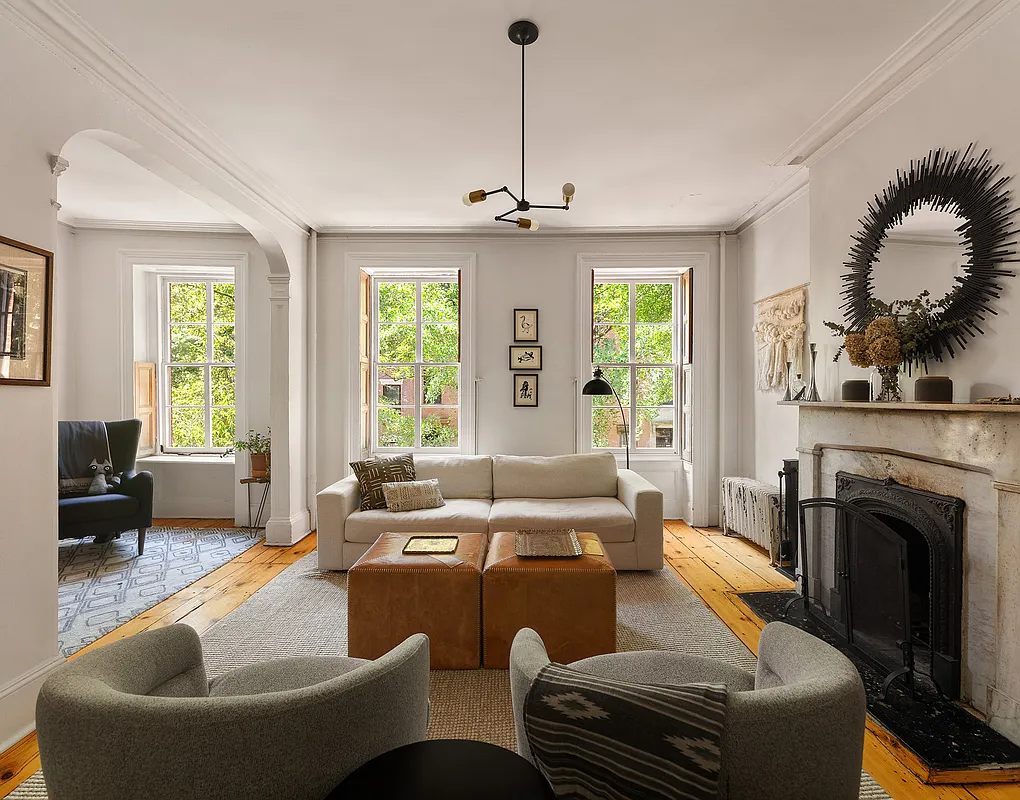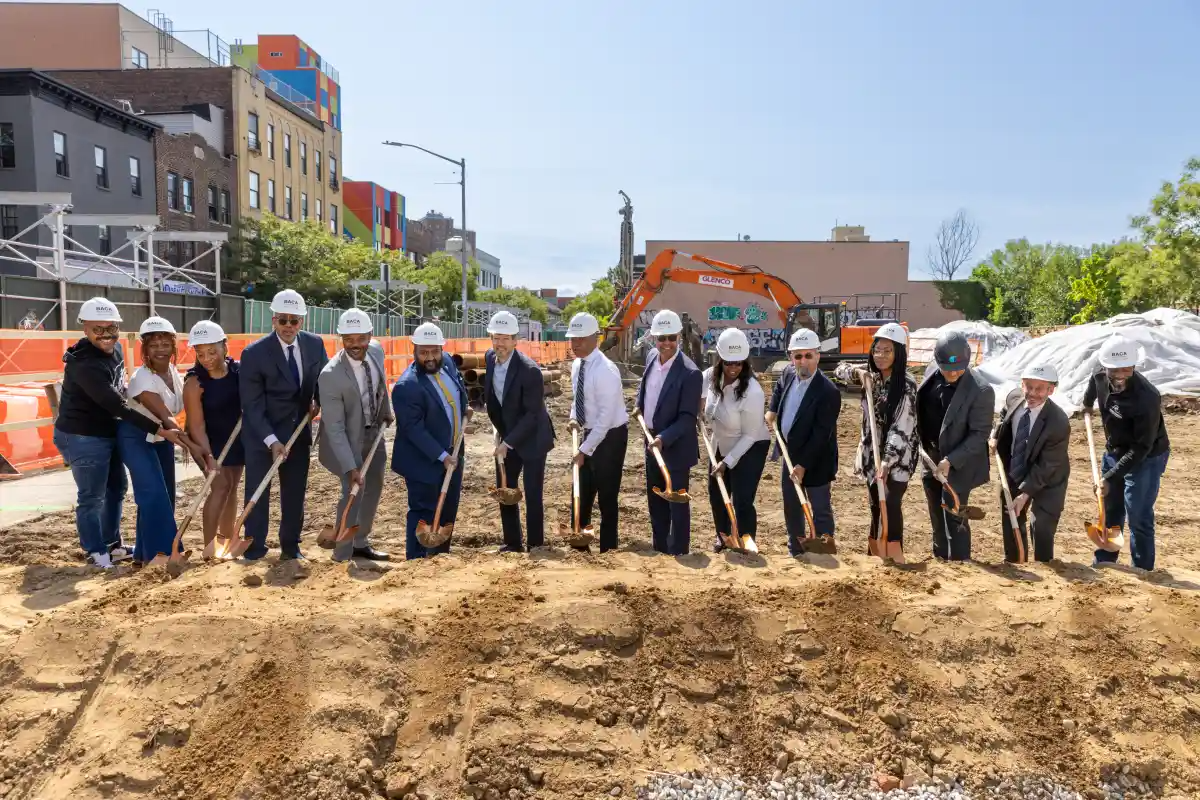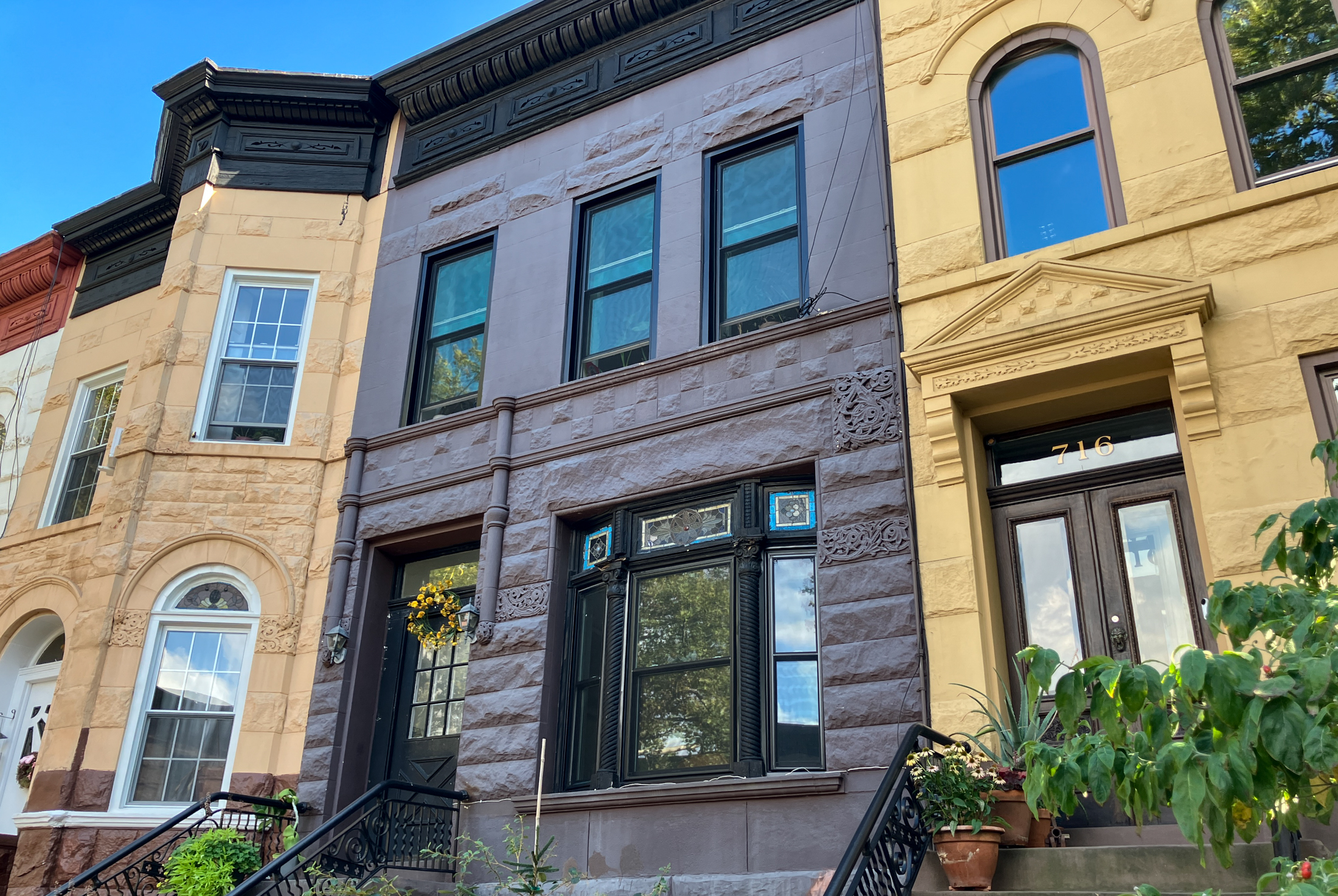House of the Day: The Anti-Brownstone
We won’t waste too much breath bemoaning all the things that are depressing about this new construction in Bedford Stuyvesant. Just one question though: Even if you are building a new building of the Fedders school, do you really need to stick the utility meters front and center on the facade? The funny thing about…

 We won’t waste too much breath bemoaning all the things that are depressing about this new construction in Bedford Stuyvesant. Just one question though: Even if you are building a new building of the Fedders school, do you really need to stick the utility meters front and center on the facade? The funny thing about this place, too, is that for $739,000 you could find a decent original brownstone in Bed Stuy. Is anyone really buying this crap, especially at these prices?
We won’t waste too much breath bemoaning all the things that are depressing about this new construction in Bedford Stuyvesant. Just one question though: Even if you are building a new building of the Fedders school, do you really need to stick the utility meters front and center on the facade? The funny thing about this place, too, is that for $739,000 you could find a decent original brownstone in Bed Stuy. Is anyone really buying this crap, especially at these prices?
Bed Stuy New Construction [Craigslist]





Good design doesn’t cost any more than bad design.
Section 8 is a housing subsidy program where TNs pay roughly 30% of their income on housing, and the government pays the rest up to a set limit.
There used to be two programs, certificates and vouchers, the former requiring the tenant to rent an apt that did not exceed a certain rent with the gov paying a higher % of the rent, and the latter where the family is given a set amount of assistance regardless of the rent.
In NYC, vouchers are dominant b/c it’s hard to find apts within the certificate program price range (often the price ceiling is absurdly low). Also, I think the certificate program is/has been phased out. As a condition to renting to Section 8 TNs, properties must pass a “fairly” rigorous inspection. The benefit to the lanlord is that rent comes in the mail from Uncle Sam except for the TNs portion, if any. Inspection failures, even if they are the result of TN damage can cause a freeze in rental payments, however, I’m not convinced that any LL in NYC is really that protected in the event of non-payment of rent. It’s a TN leaning system and it’s common for LL’s to face delays and non-payment in trying to get rid of bad TN’s, no matter where they get their rent money from.
Section 8 was designed as an alternative to projects which resulted in the concentration of poor people. Obviously, and this is borne out on this board, some people don’t have a problem with concentrating the poor … In recent years, since all public benefit programs have faced cuts, alternative means of developing section 8 housing have emerged. One major mechanism is through the sale of tax credits. Developers are encouraged to build low income housing in return for an issuance of tax credits which they can sell to for profit corporations. The tax credits are a commodity to companies that need to defray their tax liabilities. The proceeds from the sale of the tax credits offset whatever losses the developer suffers building low income housing and voila, everyone’s happy. 🙂
As for what types of TN’s you’ll get on section, two types mainly, single mothers and their children, and the elderly. Are poorer tenants more likely than middle class tenants to damage property, probably. It begs the question, however, who did you think you’d be renting to when you bought a rental property in the ghetto?
Ameraleed, I have seen ratios (on bigger bldgs – which is what I deal in) as high as 16x in Brooklyn (Brklyn Hgts) and even 11x in Crown Heights. In the smaller buildings RR ratios can vary b/c many times they are sold to be owner occupied (much higher ratio on those properties)
So I really cant say what the ‘tpyical’ ratio is or should be. I know that some people recommend 10x as a guide (for investment property) but I can tell you that unless the building is completly renovated (ie. you’ll have no capital expenses), you’ll have a very hard time making any immediate real profit ( not cap gains or tax loss) at anything greater than 7x; especially with fuel costs being what they are.
Unfortunatly Babs is correct – and a very simple (and not the only) reason that Section 8 tenants are often harder on the apts then other tenants is that they are home (assuming they arent working, which is usual). The amount of wear and tear on an apartment where some is working all day is infinitly less than when someone (or many people) are home everyday all day. Which is why you will se on many ads that a LL will only take ‘working section 8’
As for Anon 4:49 comments while there are many buildings that the city should force LL to fix (or sell) it doesnt change the fact that if tenants take no care of their building and apartments it would be impossible for even the most deligent LL to keep a building in good repair and w/o violations.
Just some examples from my years in this biz – tenants who use various parts of the building to defecate and/or urinate; tenants who throw garbage out their window onto the street below; tenants who constantly overflow their bathrooms (this is a very common one and you have no idea how bad this can be unless you live below such a tenant); tenants who break the front door locks (or windows)so that their friends (and everyone else can come in w/o buzzing); tenants who paint graffiti on the inside and outside of their own building; tenants who use the roof to walk their dogs (destroys roof causing leaks on other tenants); tenants who put their garbage in hall (not in chute or basement) – I could go on and on and on; – With current regulations and laws you really only have 1 shot at keeping these type of tenants out – and that is at initial renting (b/c it is effectively impossible to evict such tenants) Therefore if their is any criteria to screen out such tenants (such as credit history, work history, demeanor, Section 8) no matter how broad you have to use it b/c once they are in, it could literally take decades before they can be removed and in the meantime they destroy the building for the rest of the tenants who simply want a nice place to live – and let me say in a small building 1 or 2 such tenants can effectively make living there a nightmare for everyone.
BTW – I cant tell you how many prospective tenants (who know 1st hand) ask me if we accept Section 8 – not b/c they have it but b/c they know they dont want to live in a building that has Sec 8 tenants.
As a long time landlord who has rented to Section 8 and lots of regular low income renters, I can tell you from tons of personal experience:
MOST OF THE TIME, THEY TRASH THE APARTMENT!
It’s a huge mistake to buy low income housing as an investment. Low income tenants seem to have very little respect for anything. It’s disgusting how so many poor people live. I don’t understand how a lack of money transalates to dirty, often feces ridden, apartments.
No matter how nicely I renovated an apartment to qualify it for Section 8 tenants, they always found a way to destroy it.
NEVER, EVER RENT TO LOW INCOME INDIVIDUALS. THEY’LL DESTROY YOUR BUILDING AND YOU’LL NEVER MAKE ANY MONEY.
Thanks babs… you are the poster child for the views of the many fascists that visit this site. I appreciate the elegant manner that 4:39pm and 4:49pm used to try and point out your disgusting attitude and socio-economic biases but seriously – please go back to your ivory tower.
babs, is that really how it is? Is it fair to make those kinds of generalizations – that section 8 tenants will turn a pristine building into a dump? i live in an area with lots of section 8 recipients and many of the buildings are in disrepair (surprise!). it is a shame that the city does not do more to force slumlords/landlords to maintain their properties and enforce the real repair of code violations since the city is lining their pockets with inflated rent rolls etc…
Babs, why do you suppose that the poor condition of section 8 apartments is the fault of the tenants rather than the landlords’ lack of maintenance?
I doubt there is any evidence that Section 8 recipients are any harder on their homes than other tenants.
(Though common sense might suggest that renters, in general, are tougher on their buildings than owners…)
And apartments like this are paradise to Section 8 tenants, who are used to living in disgusting, poorly-maintained dumps — and unfortunately are often used to treating their apartments like that, too, so it won’t be long before these don’t look so pristine either. I might have gone with the rubble-strewn lot myself…